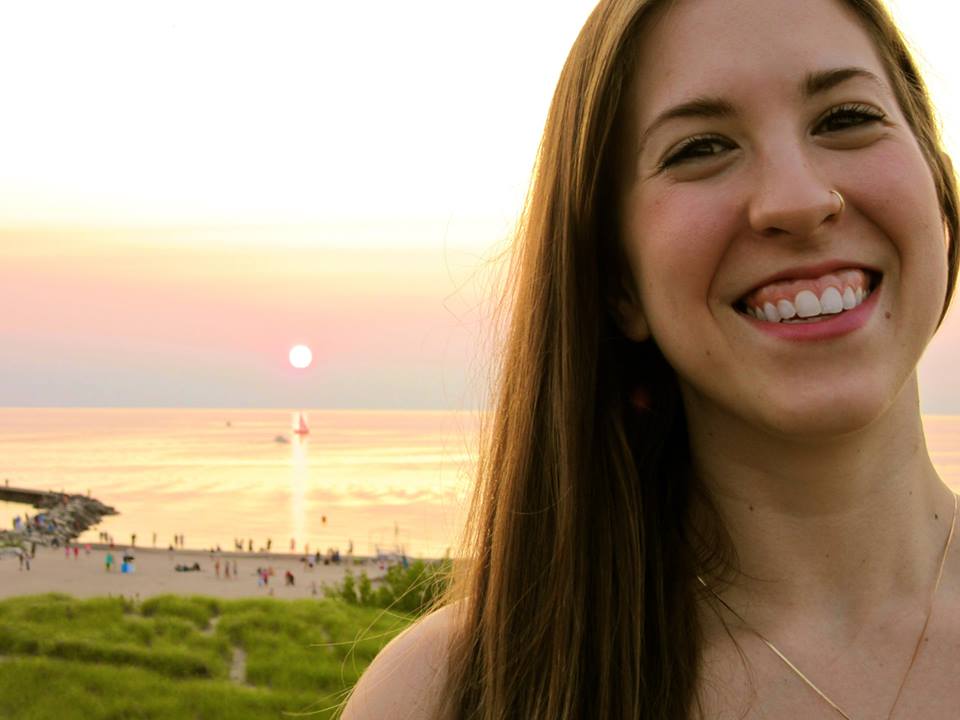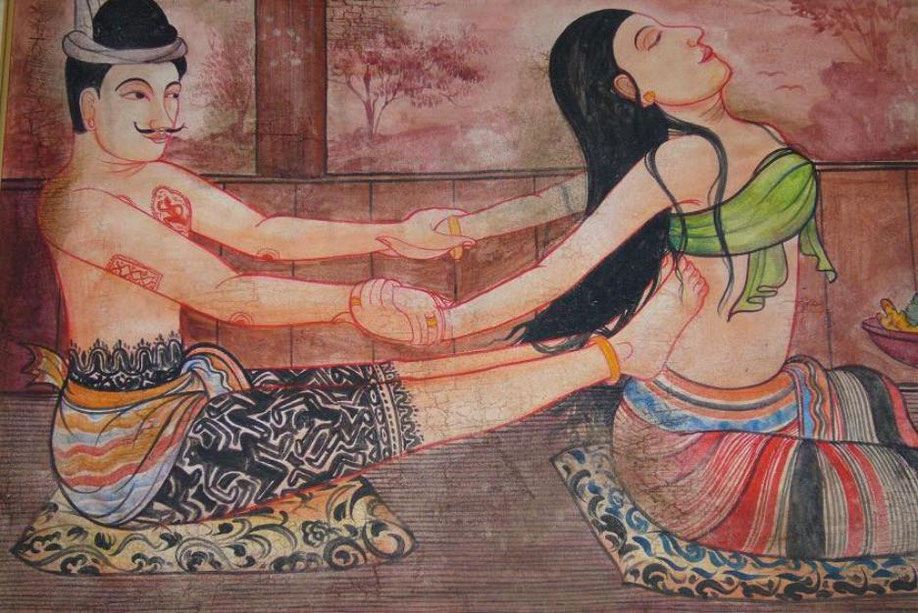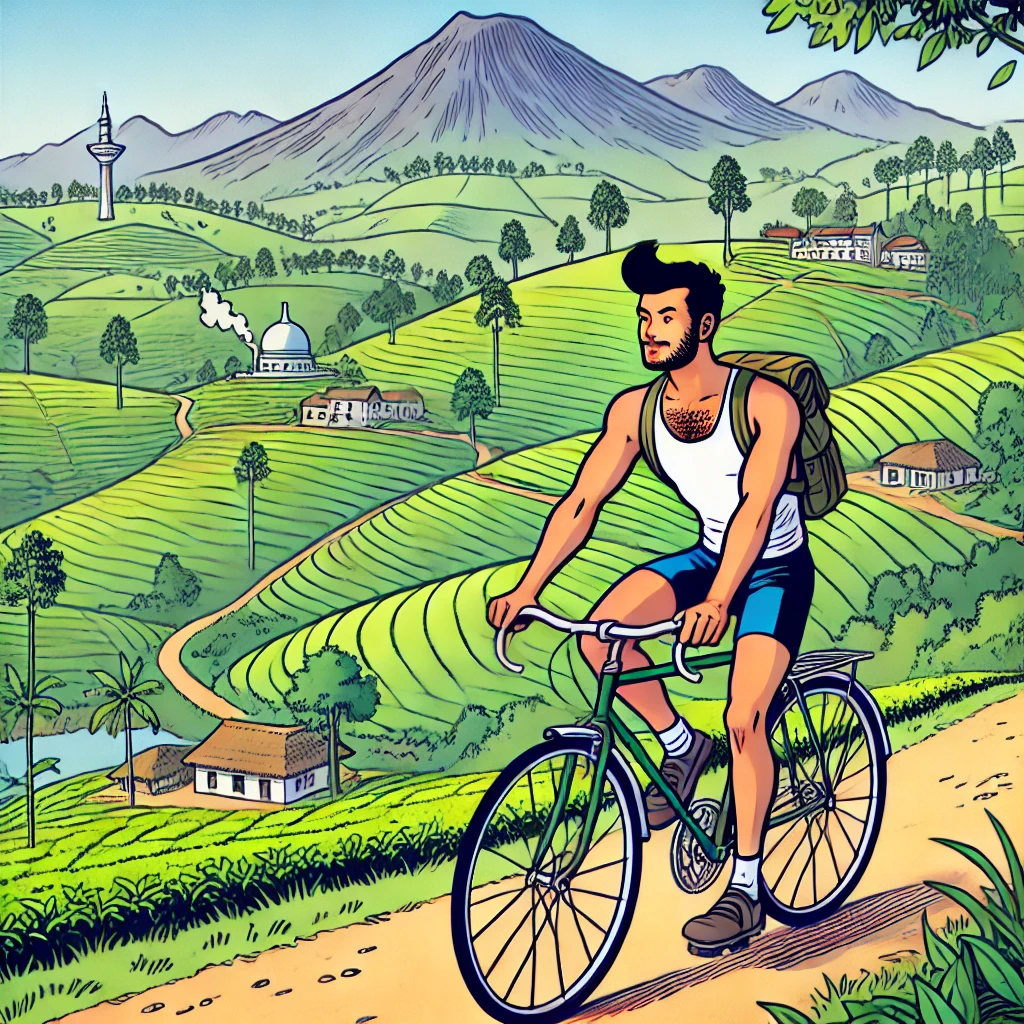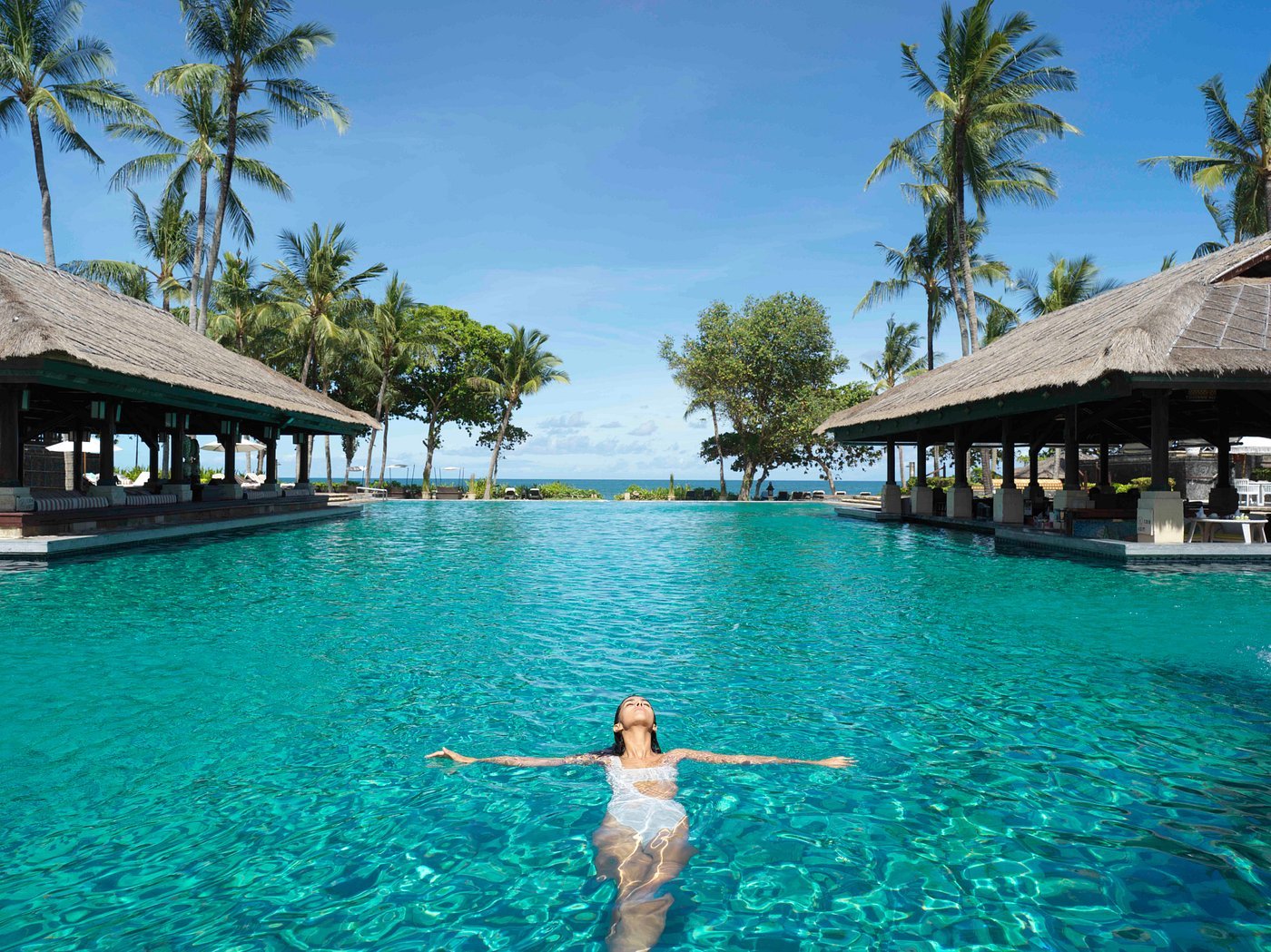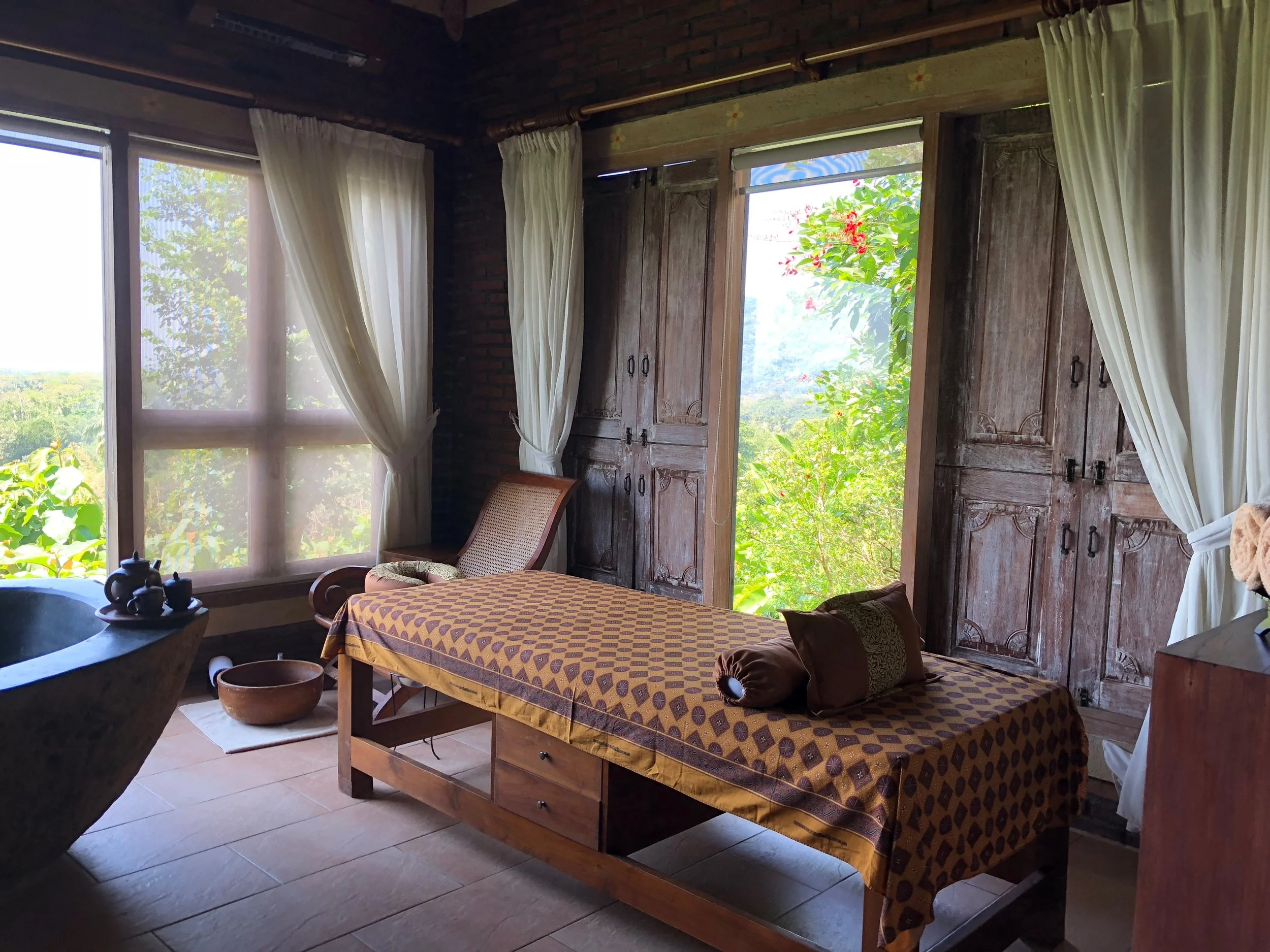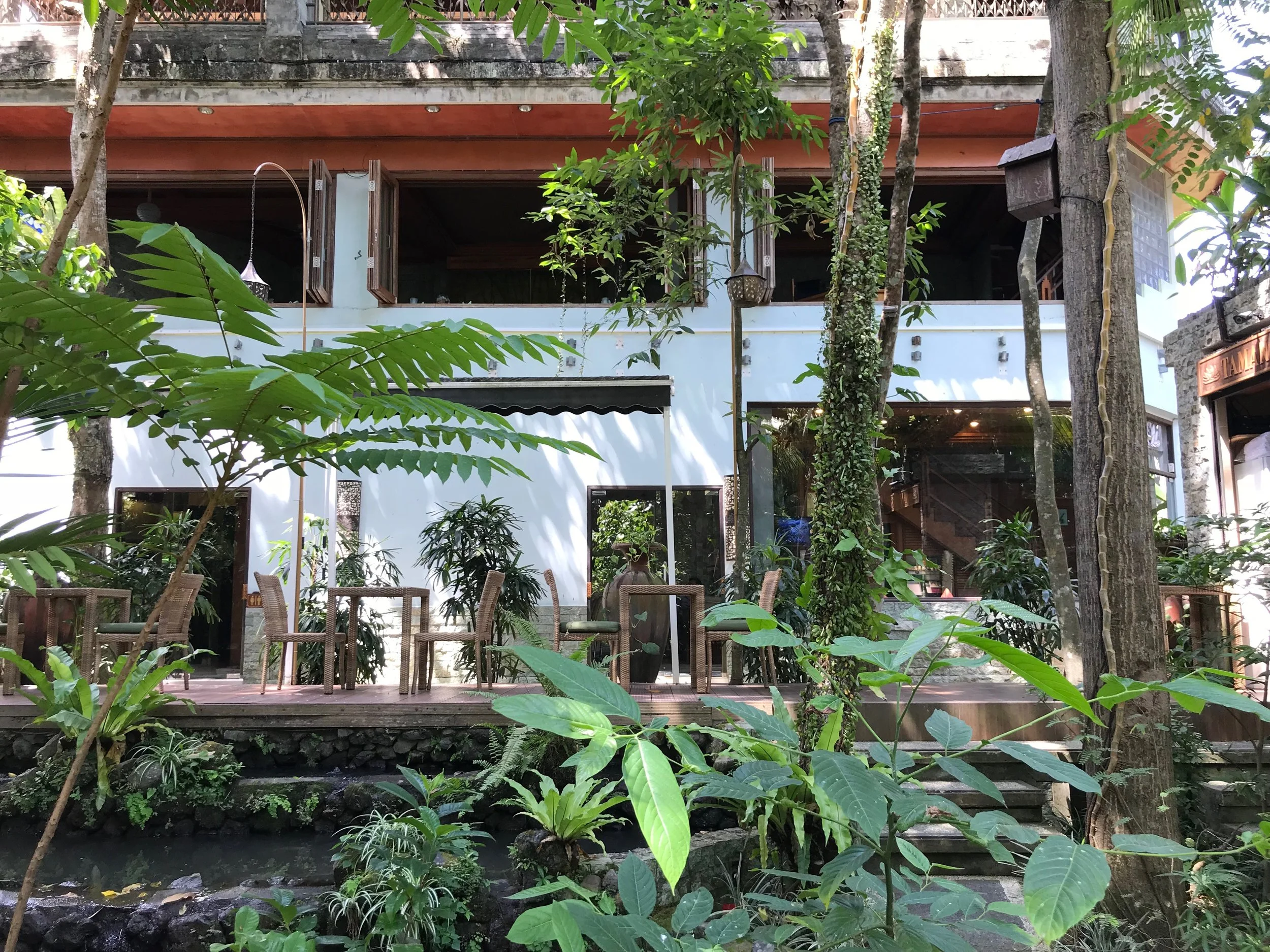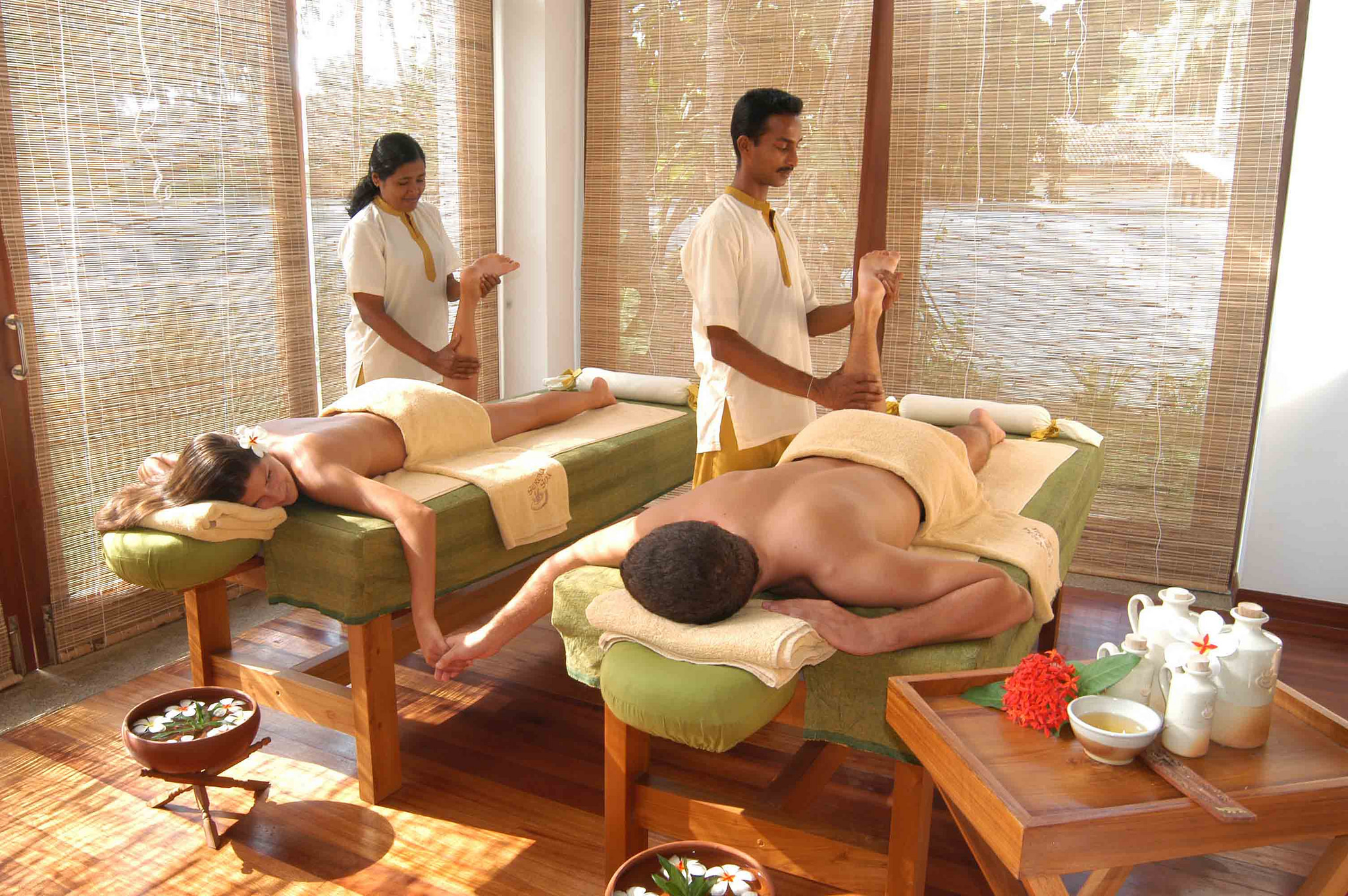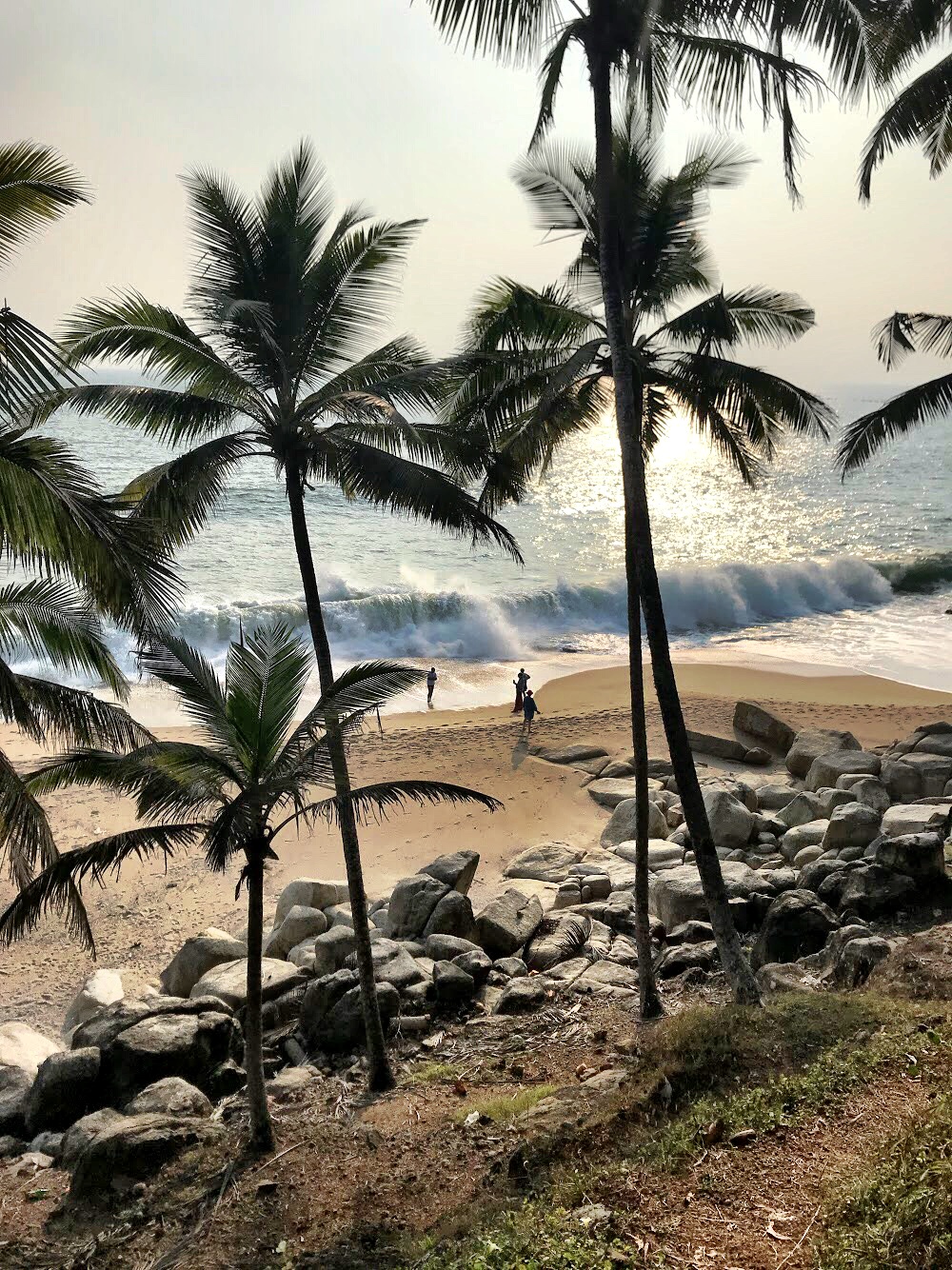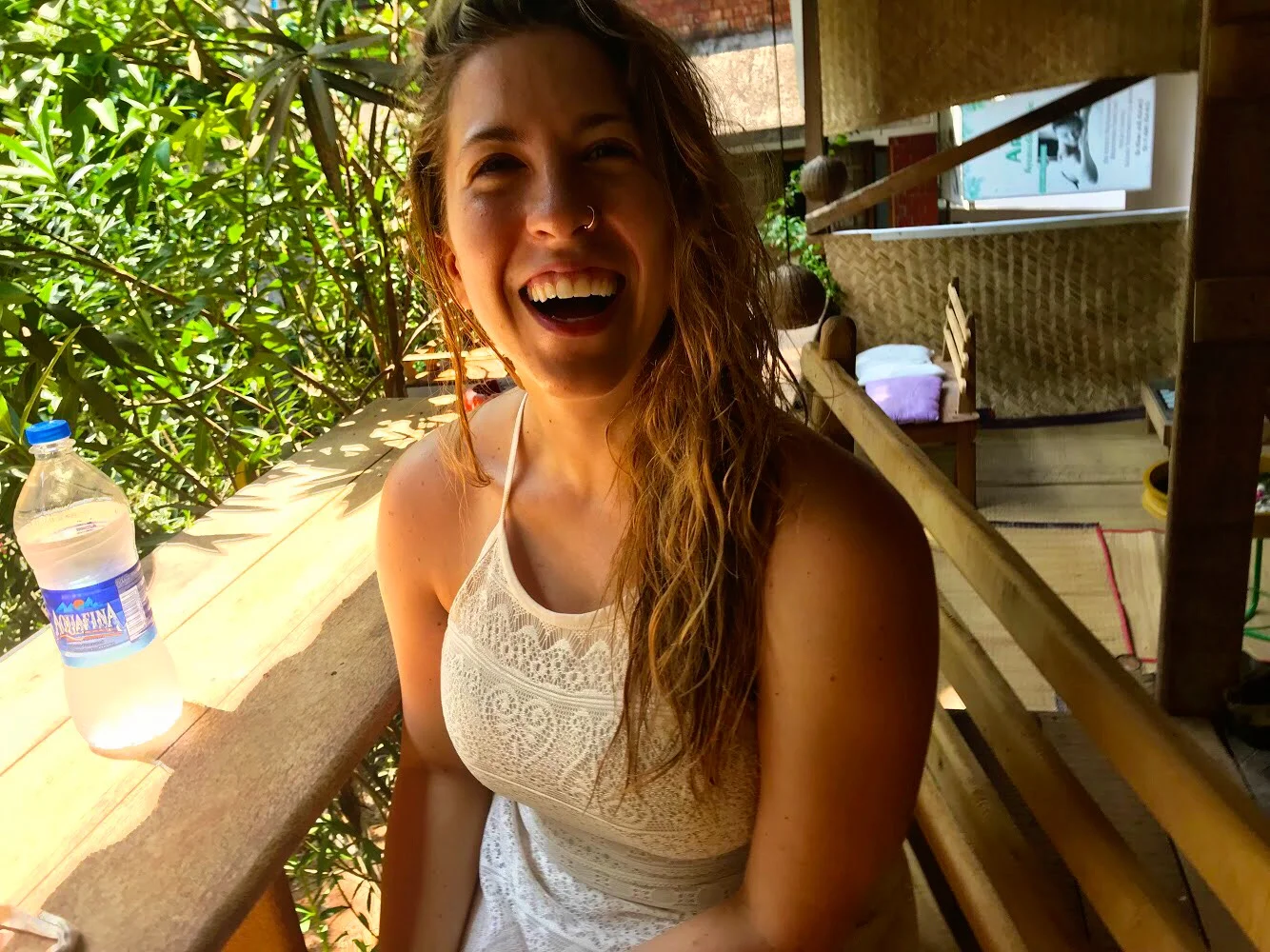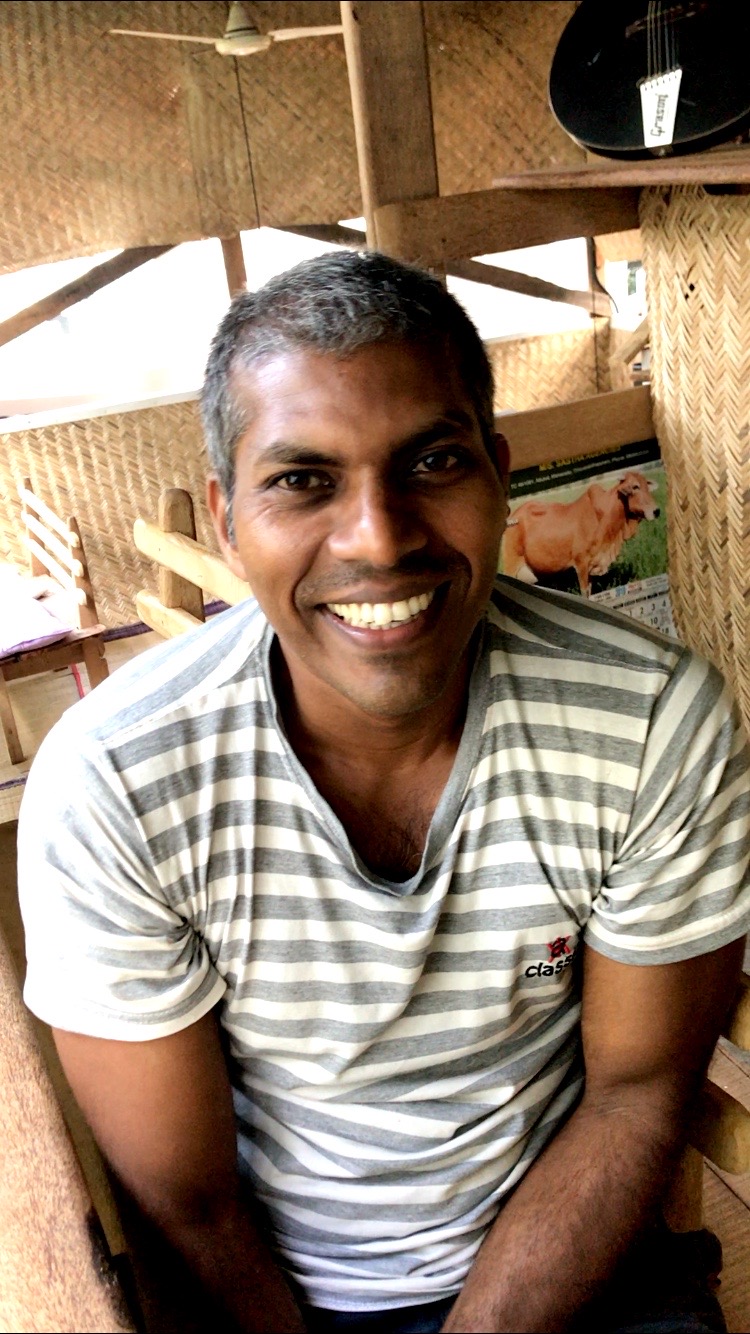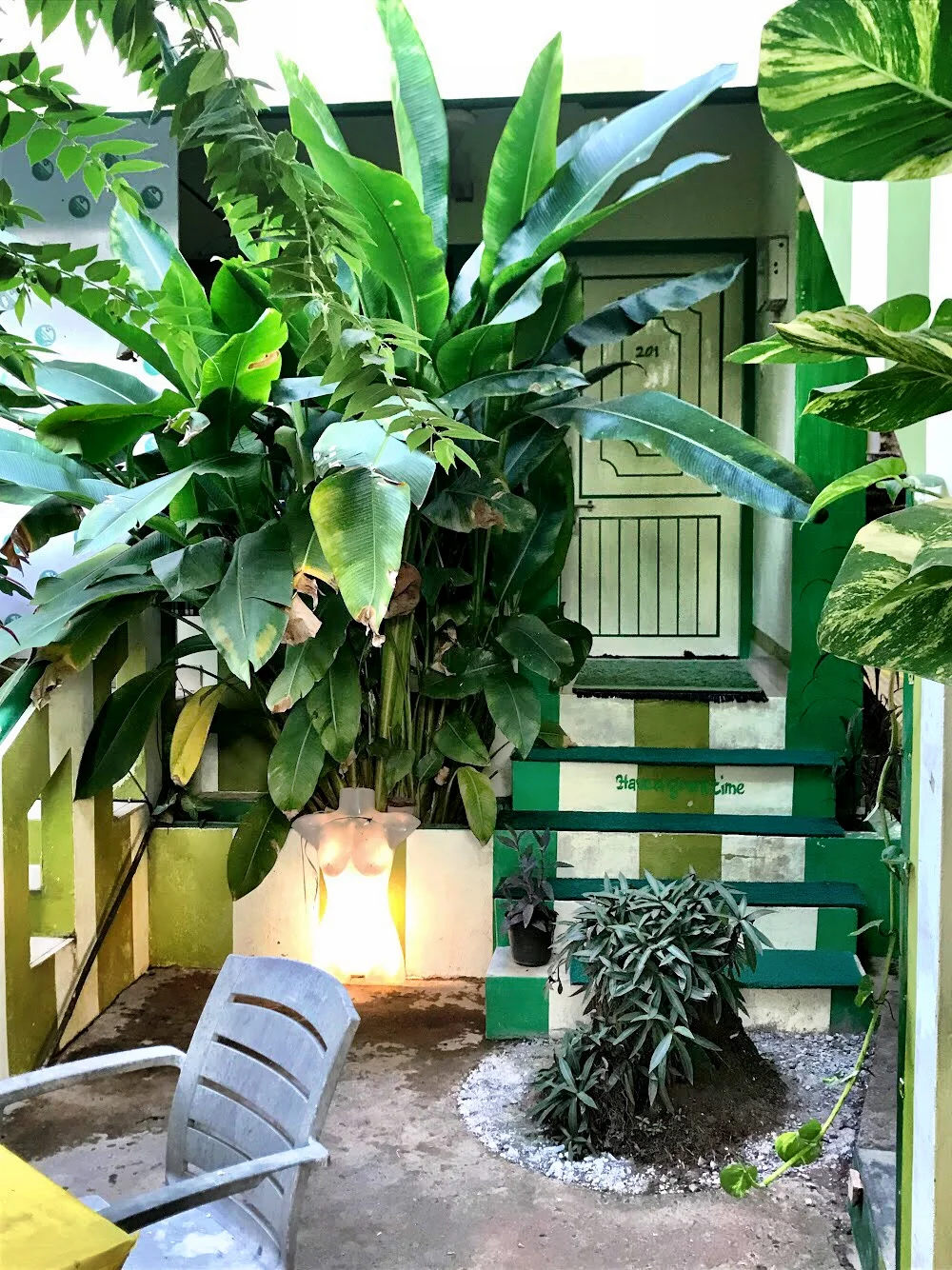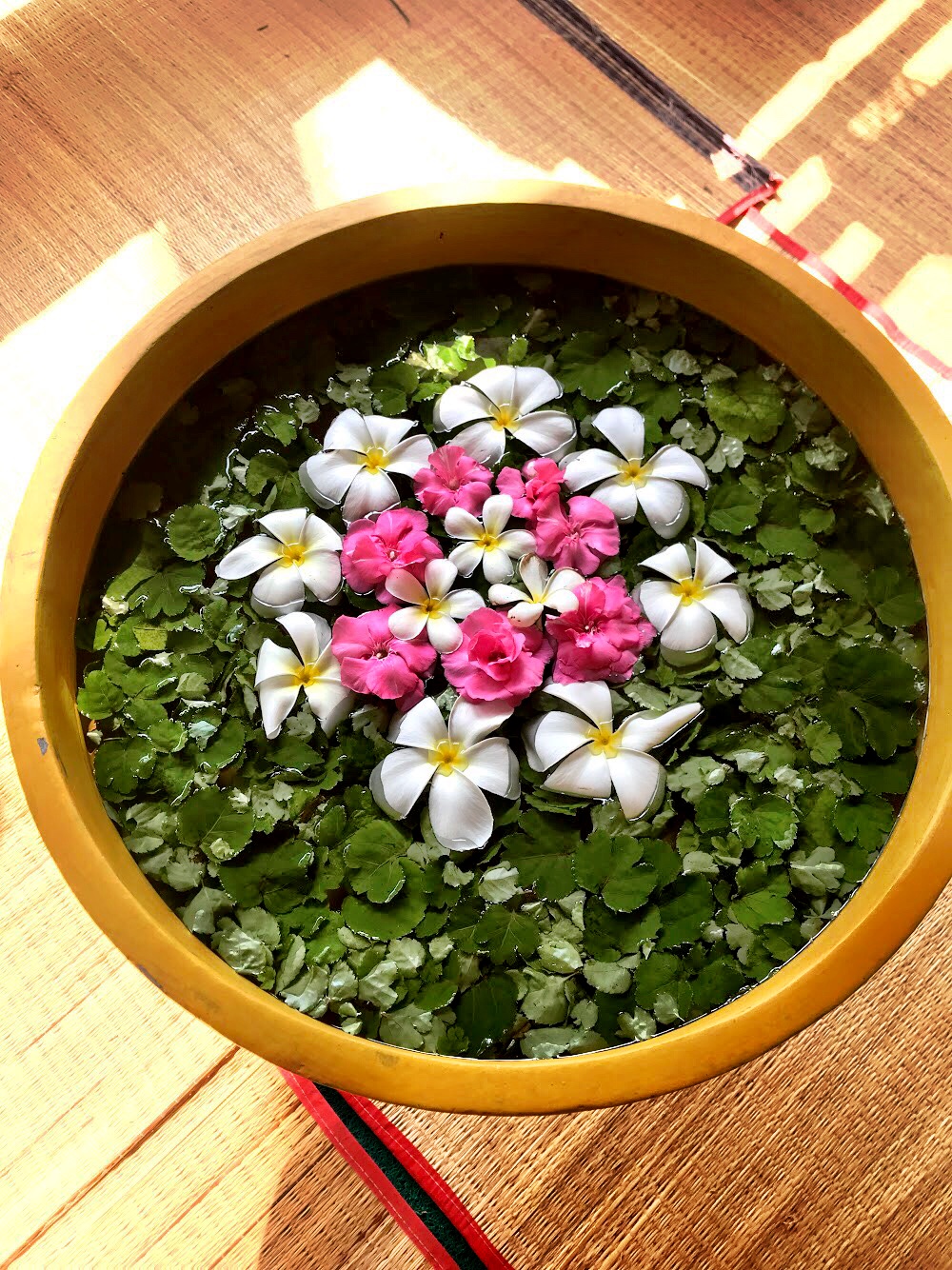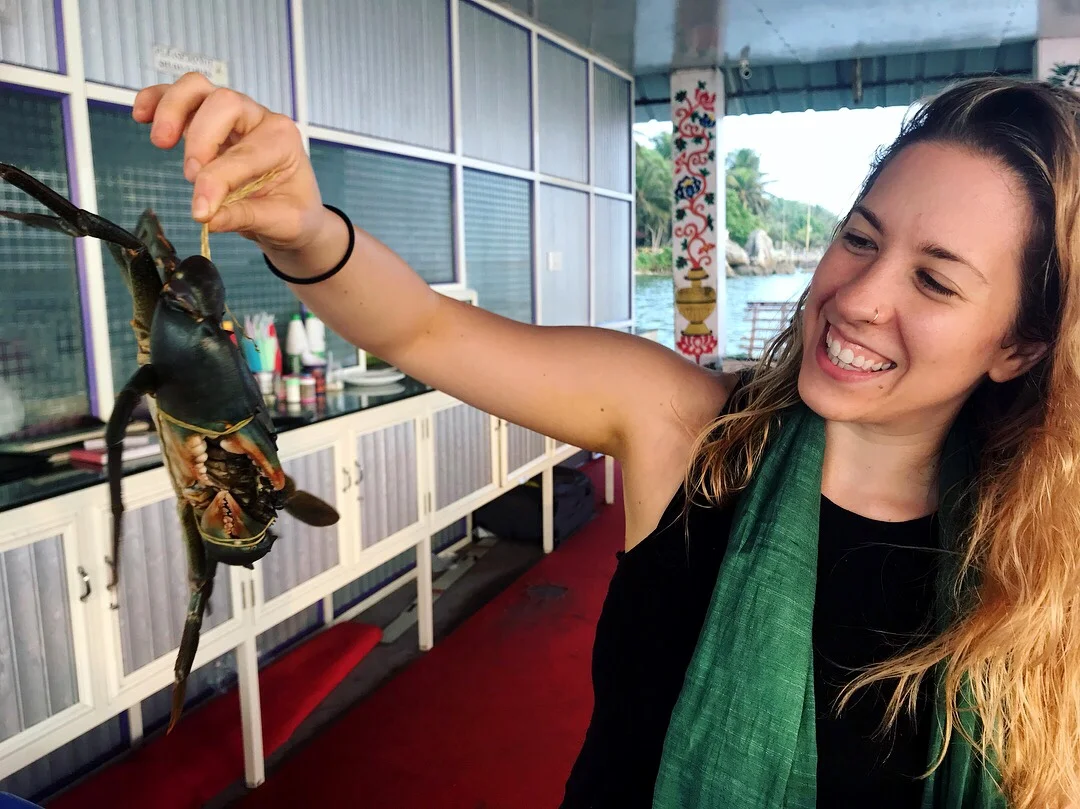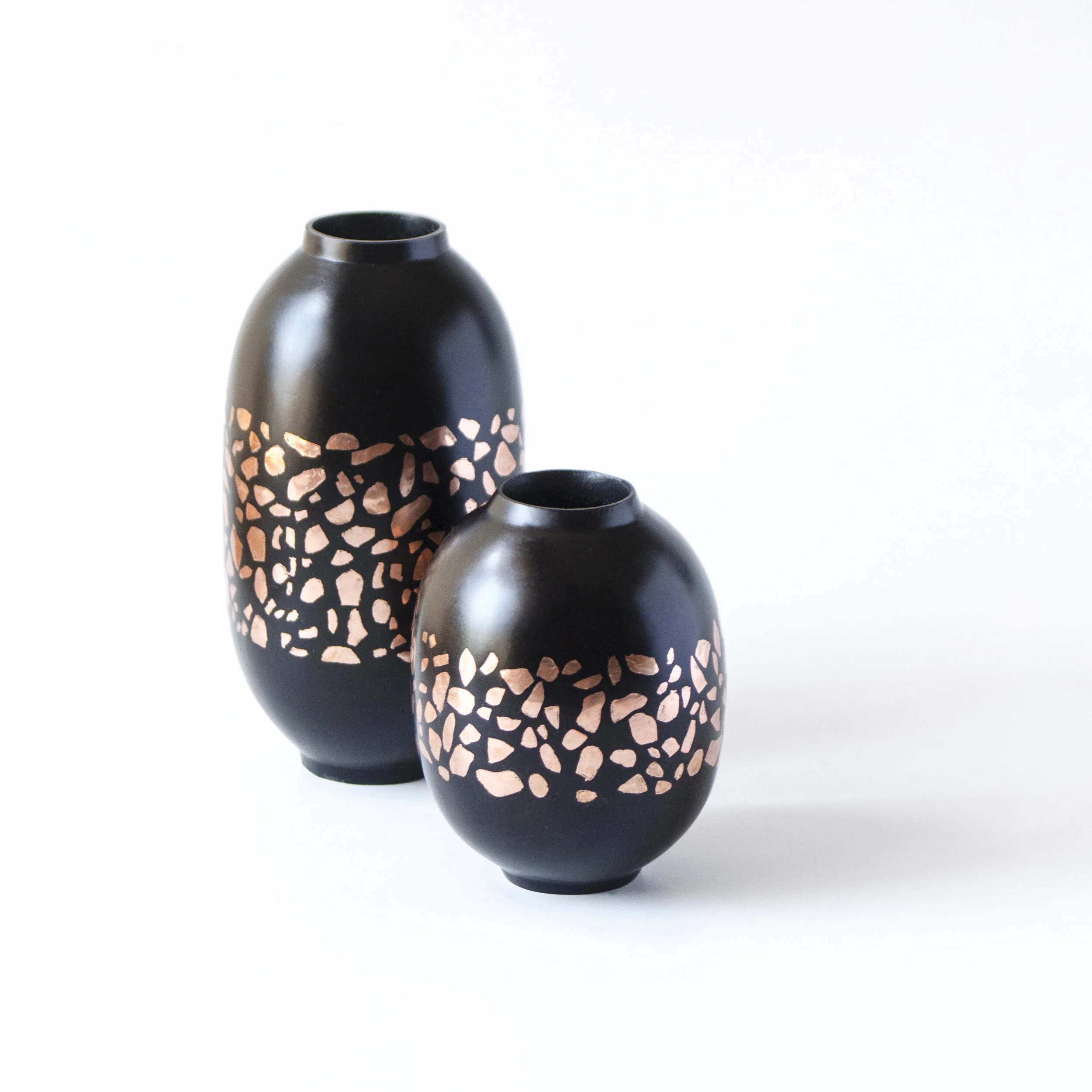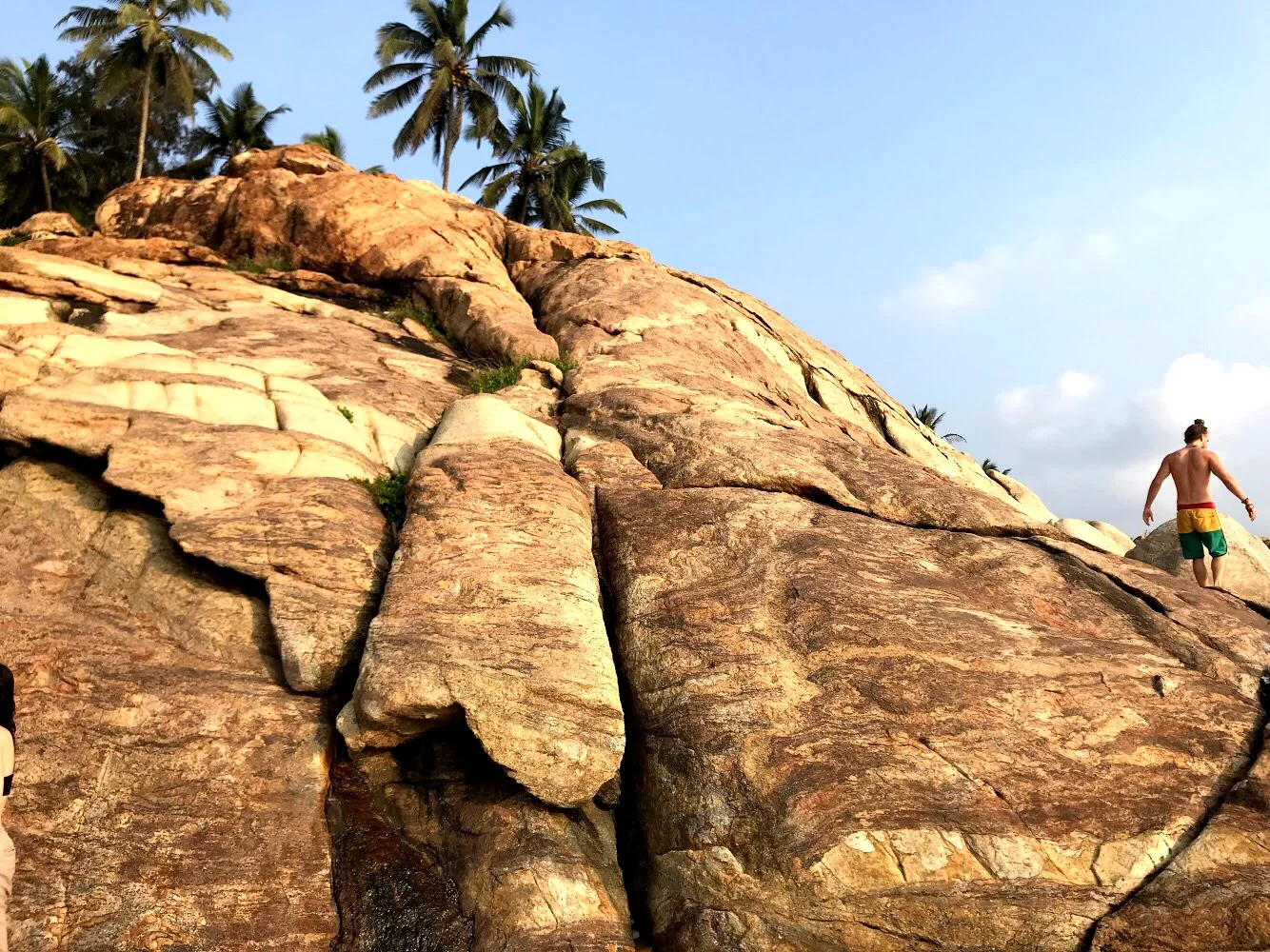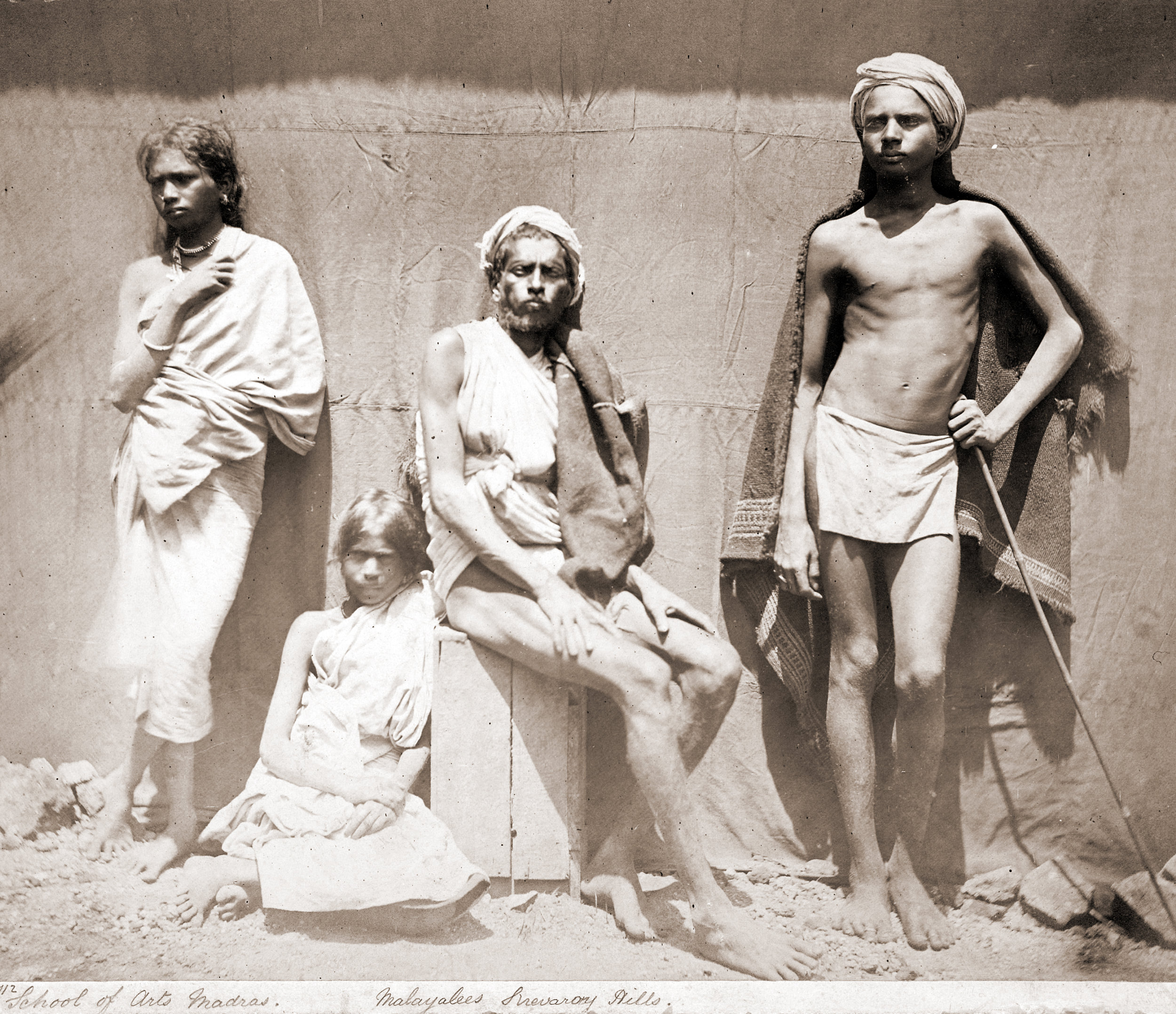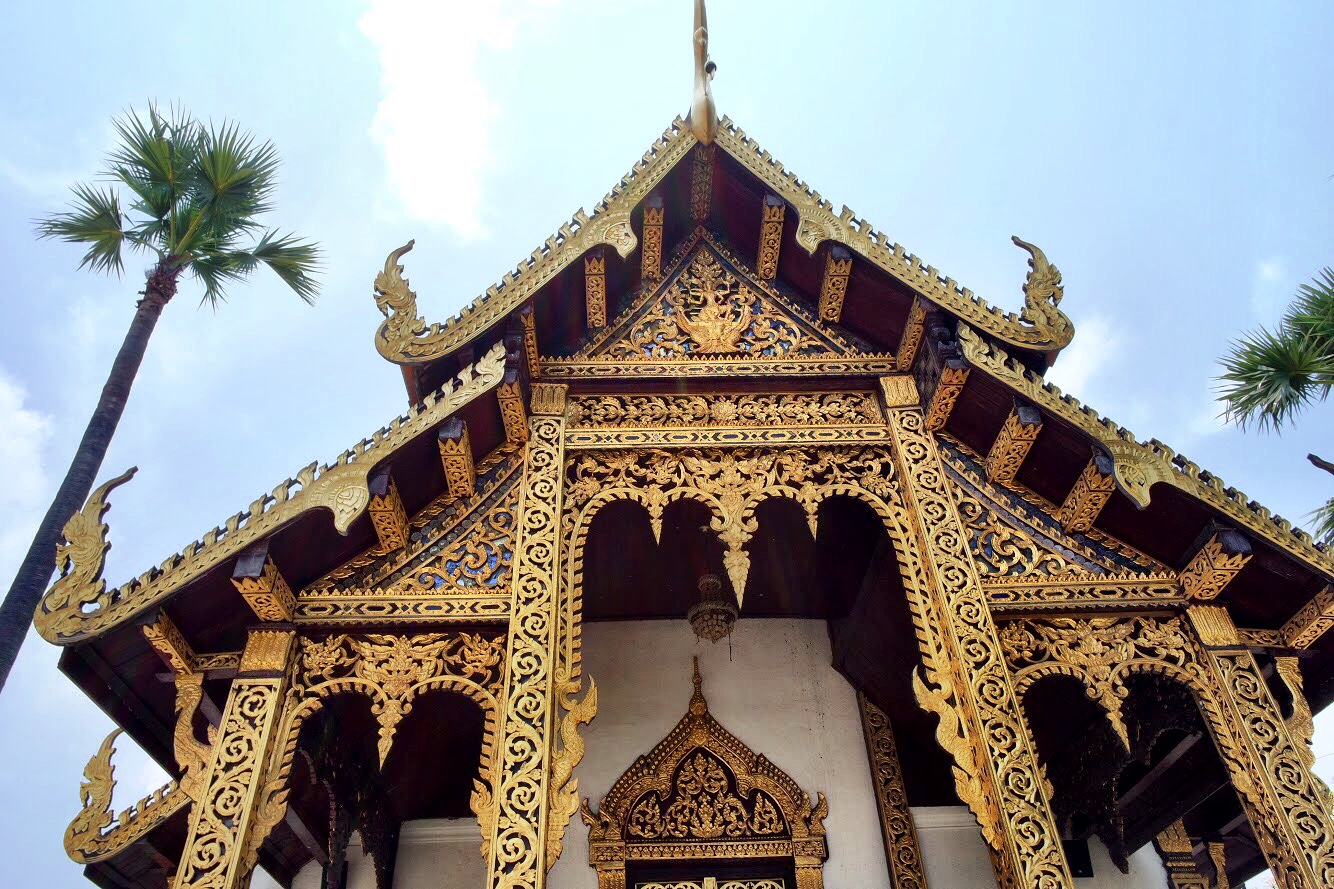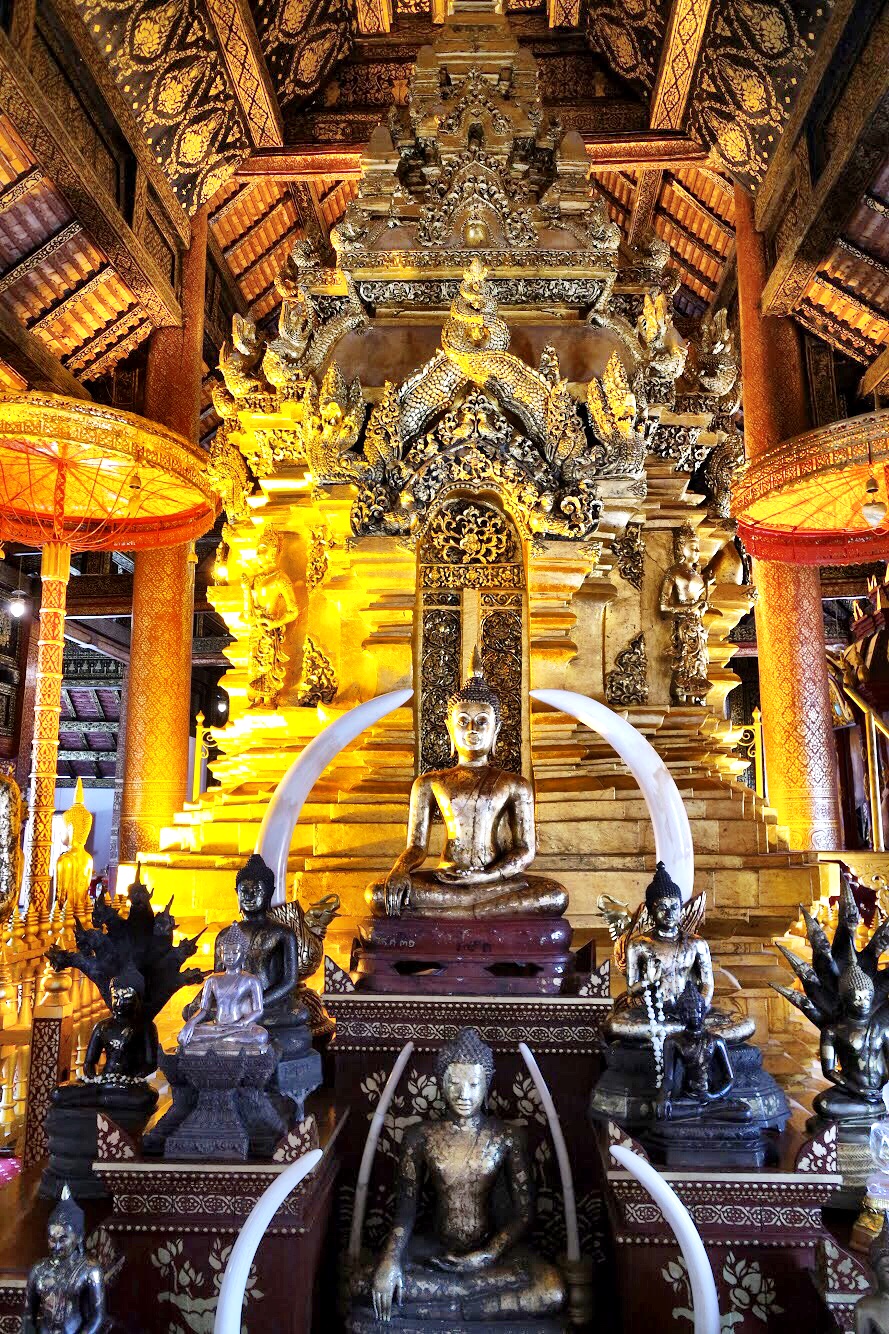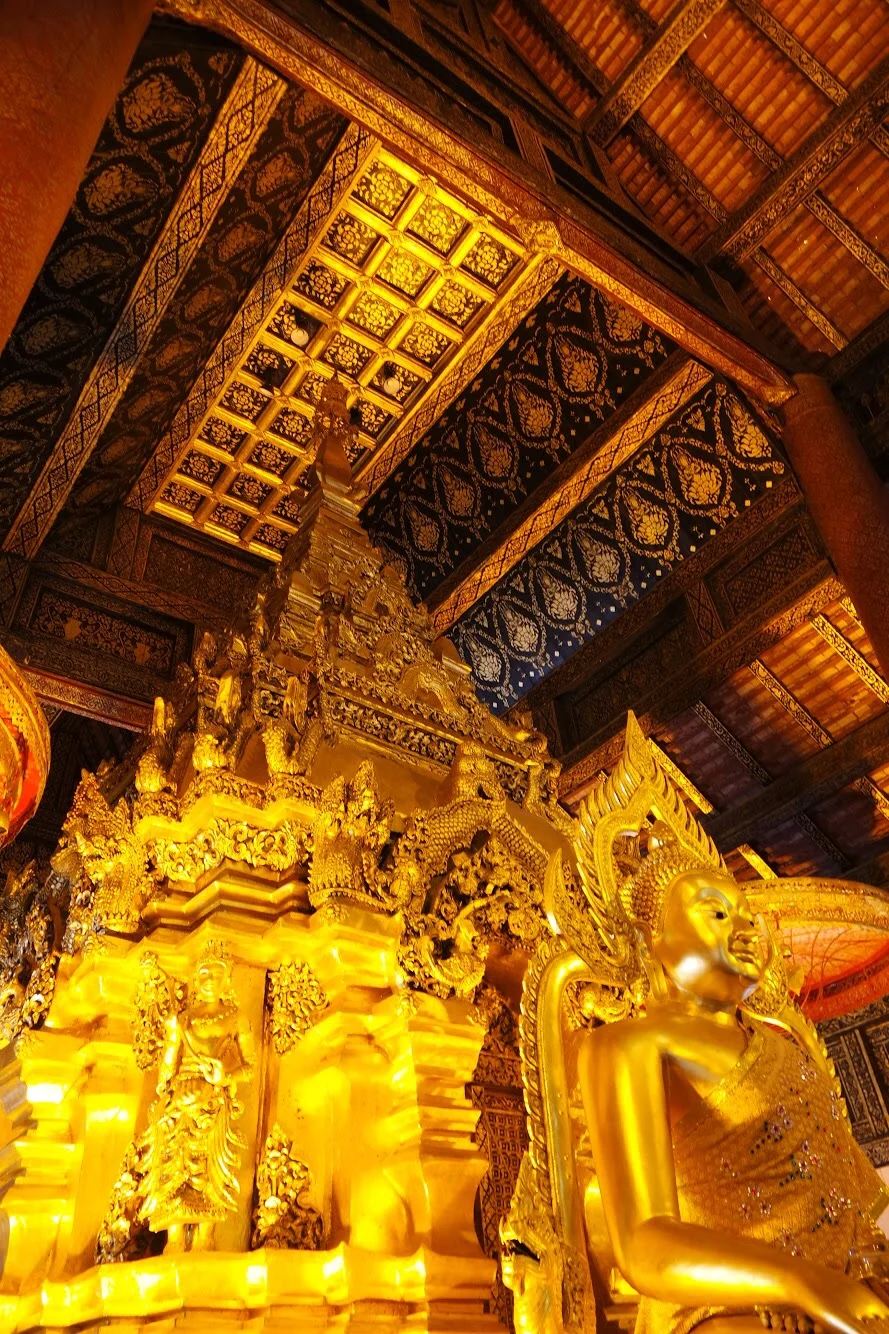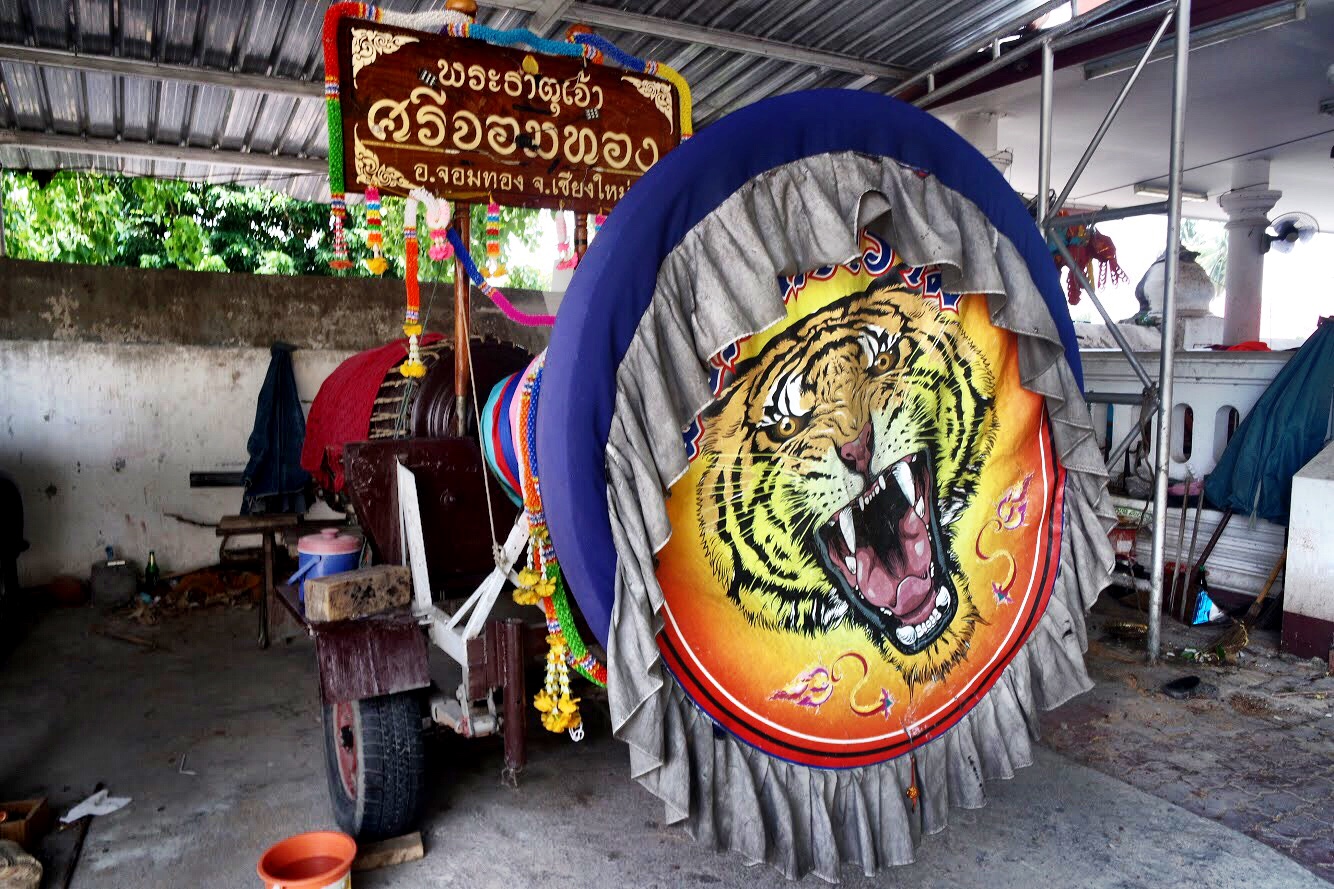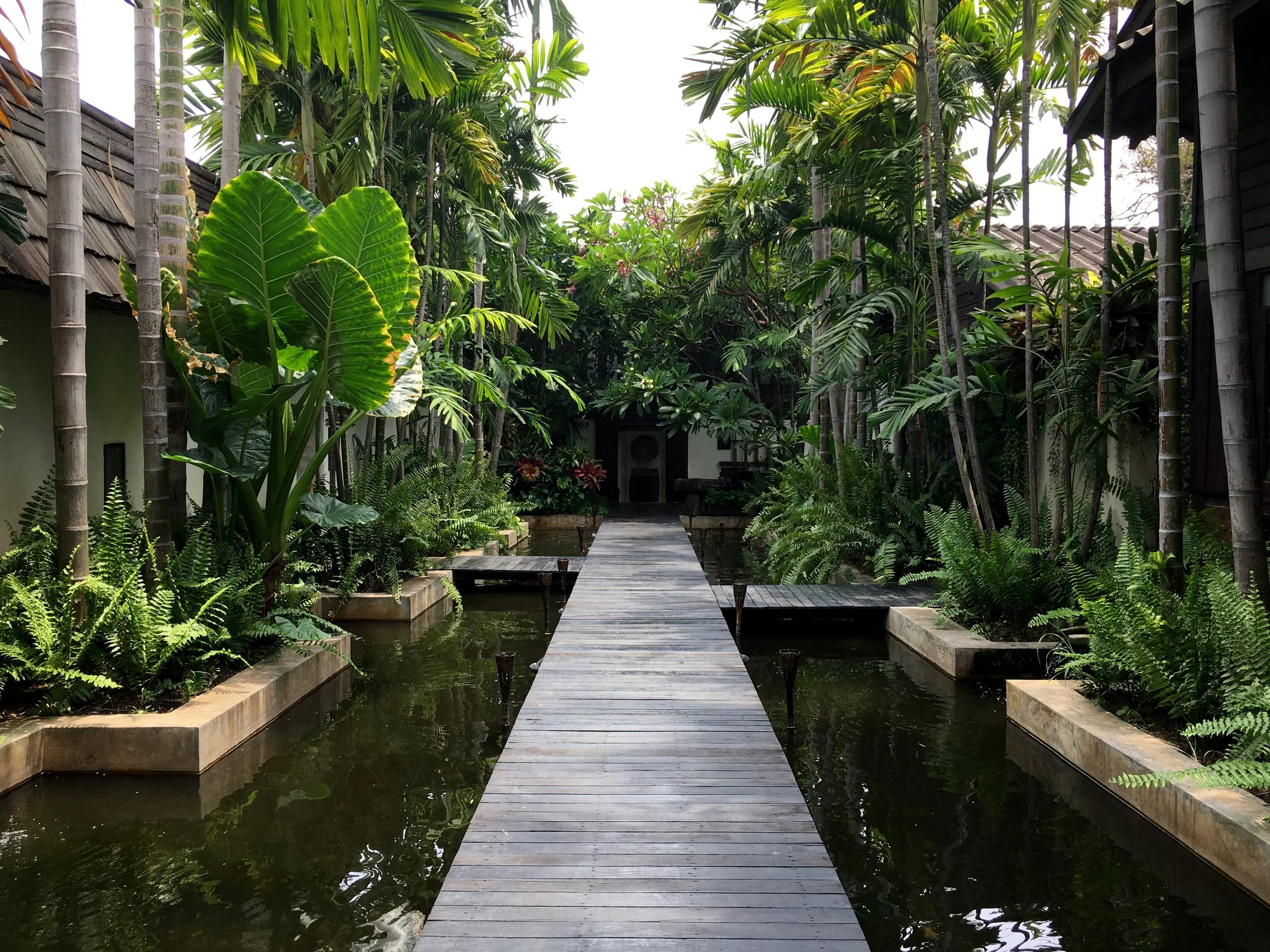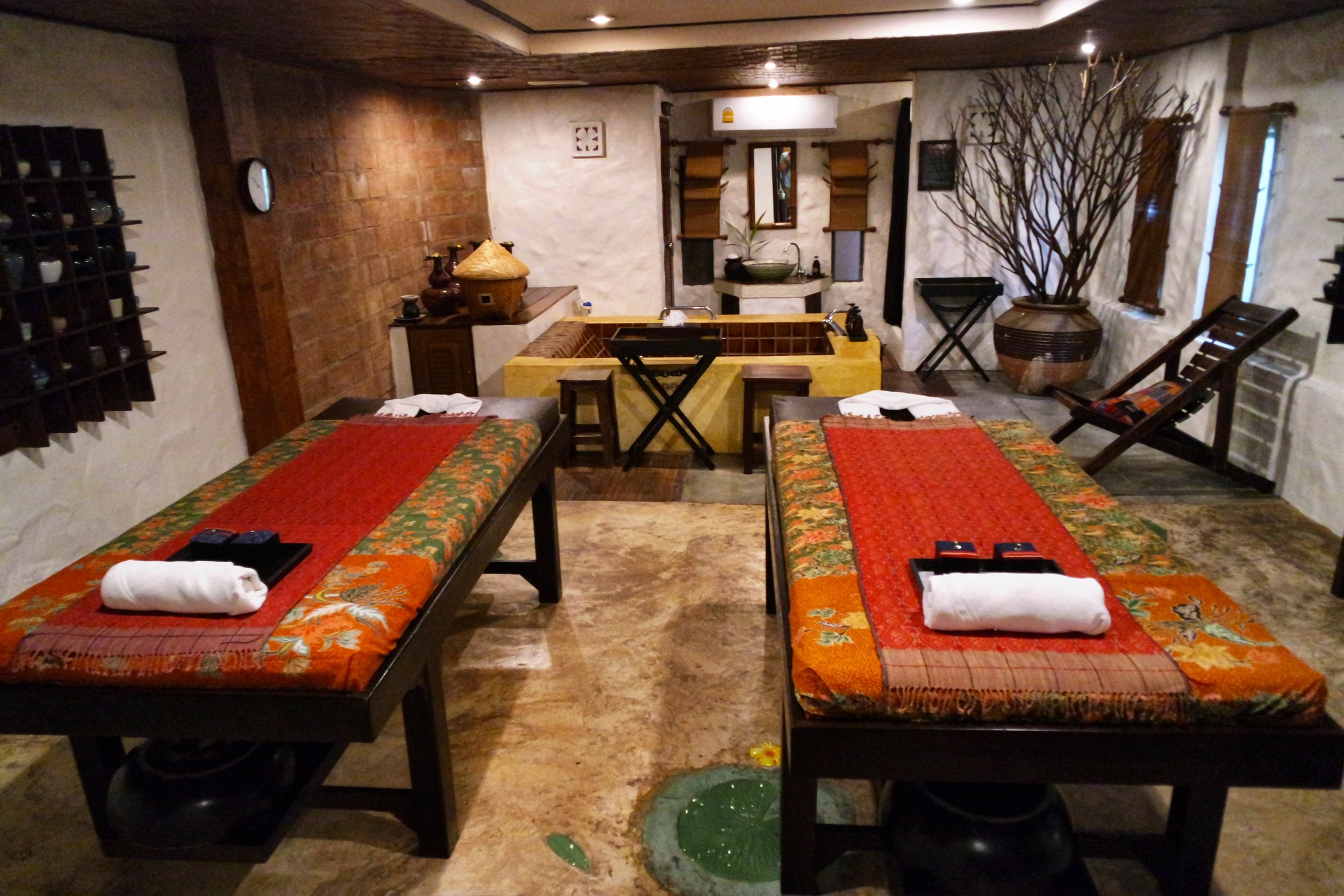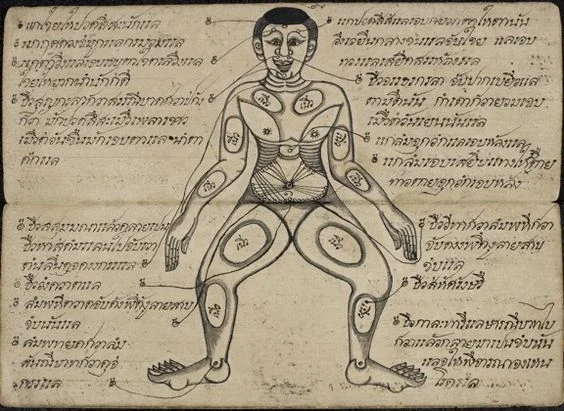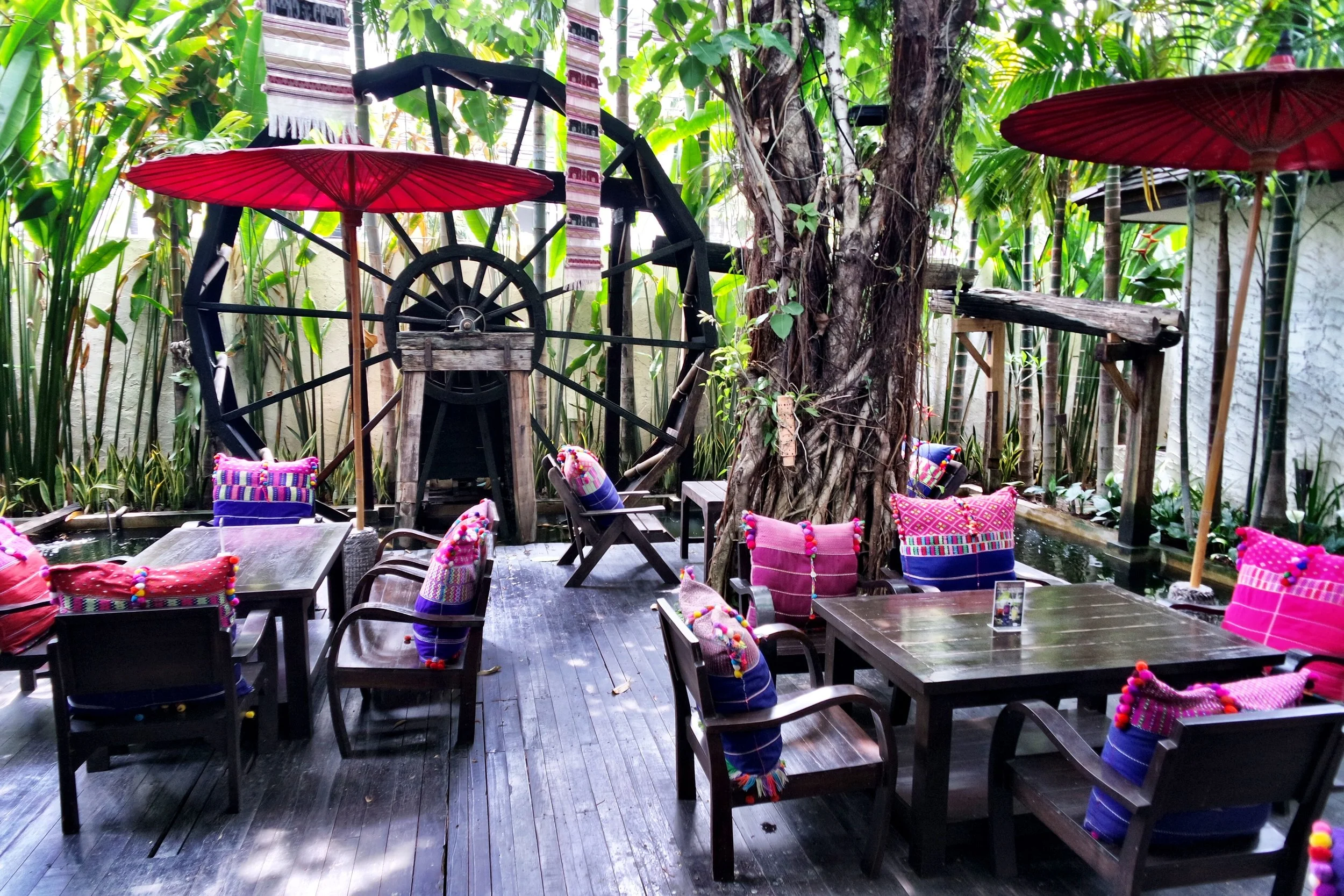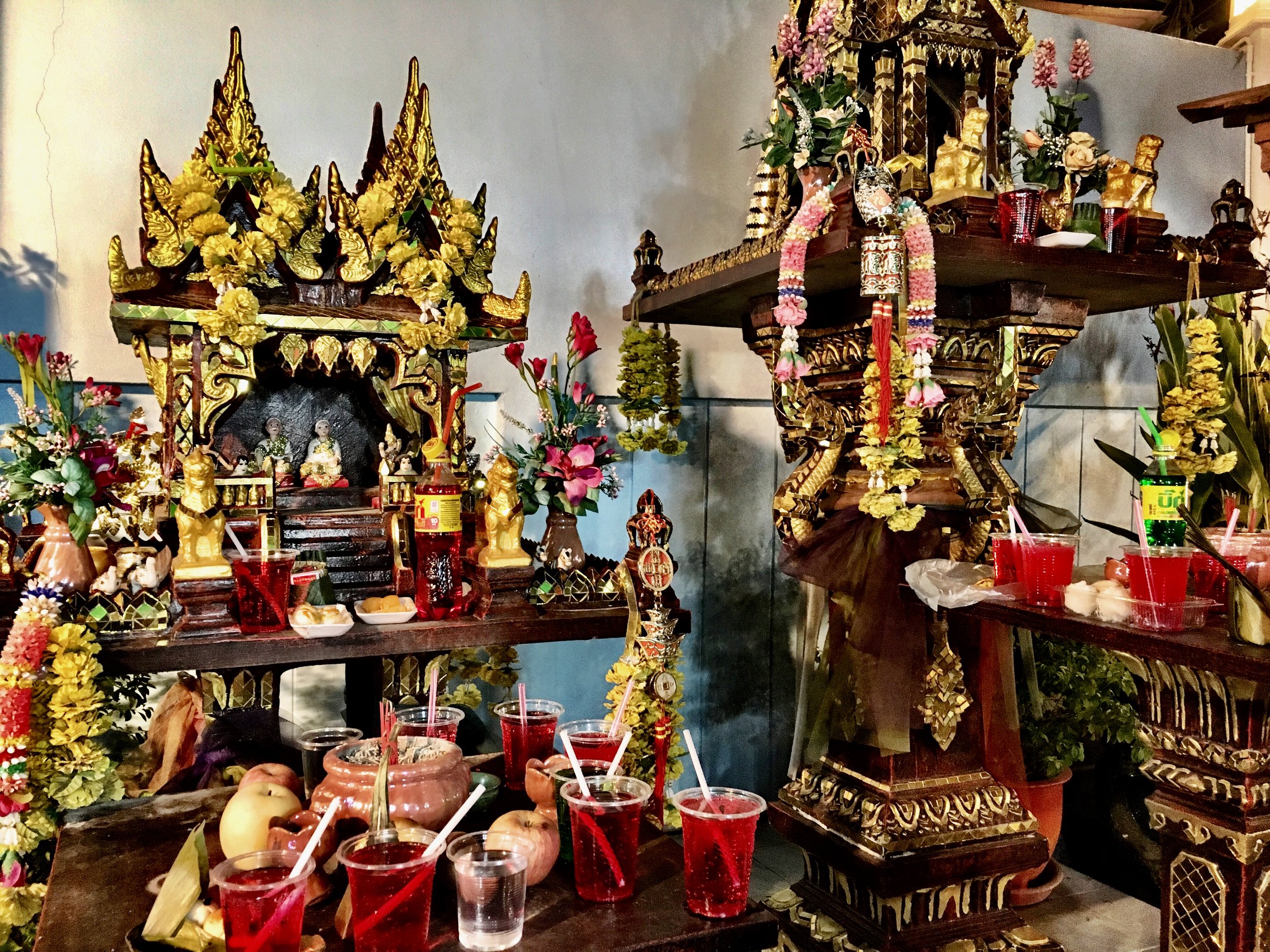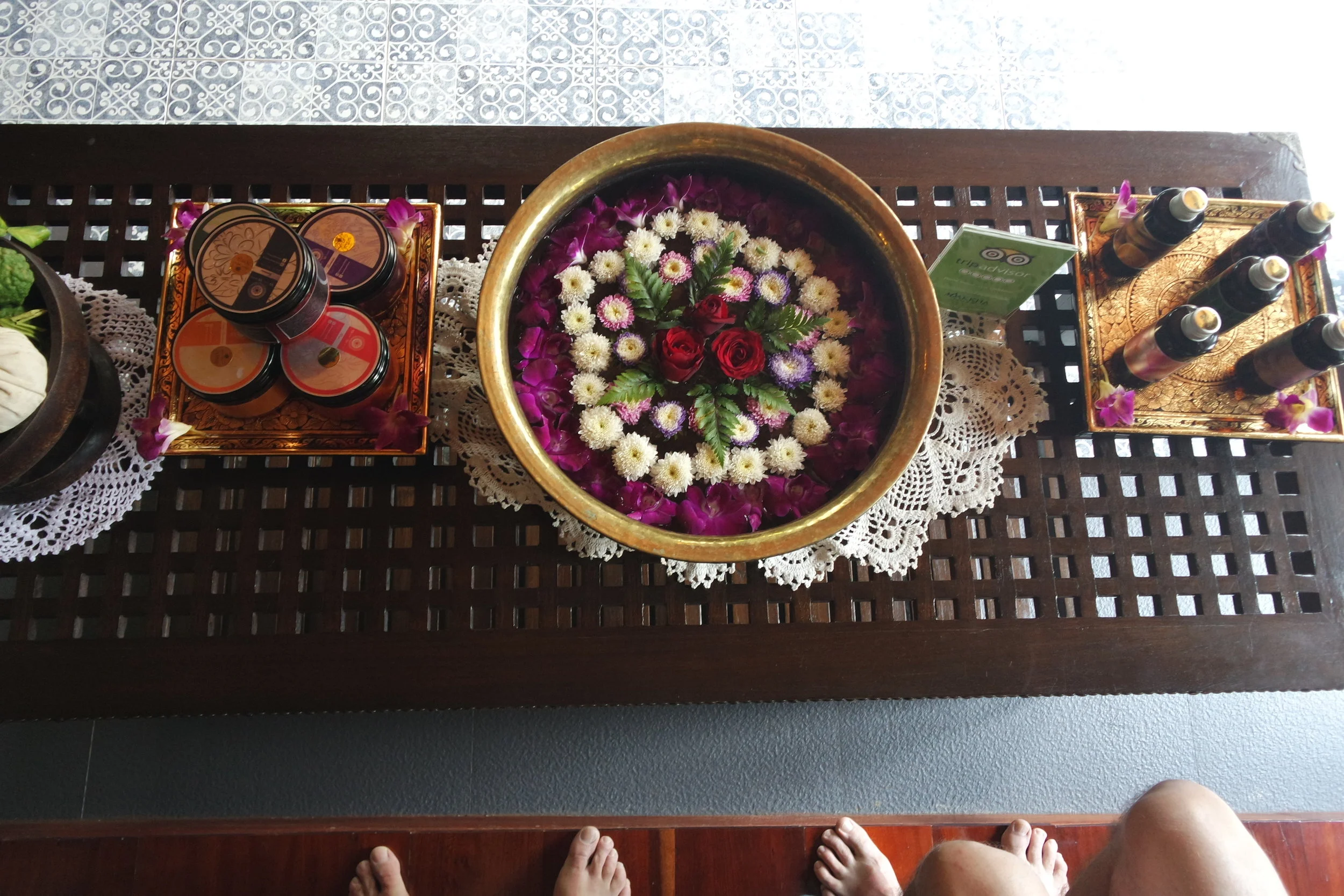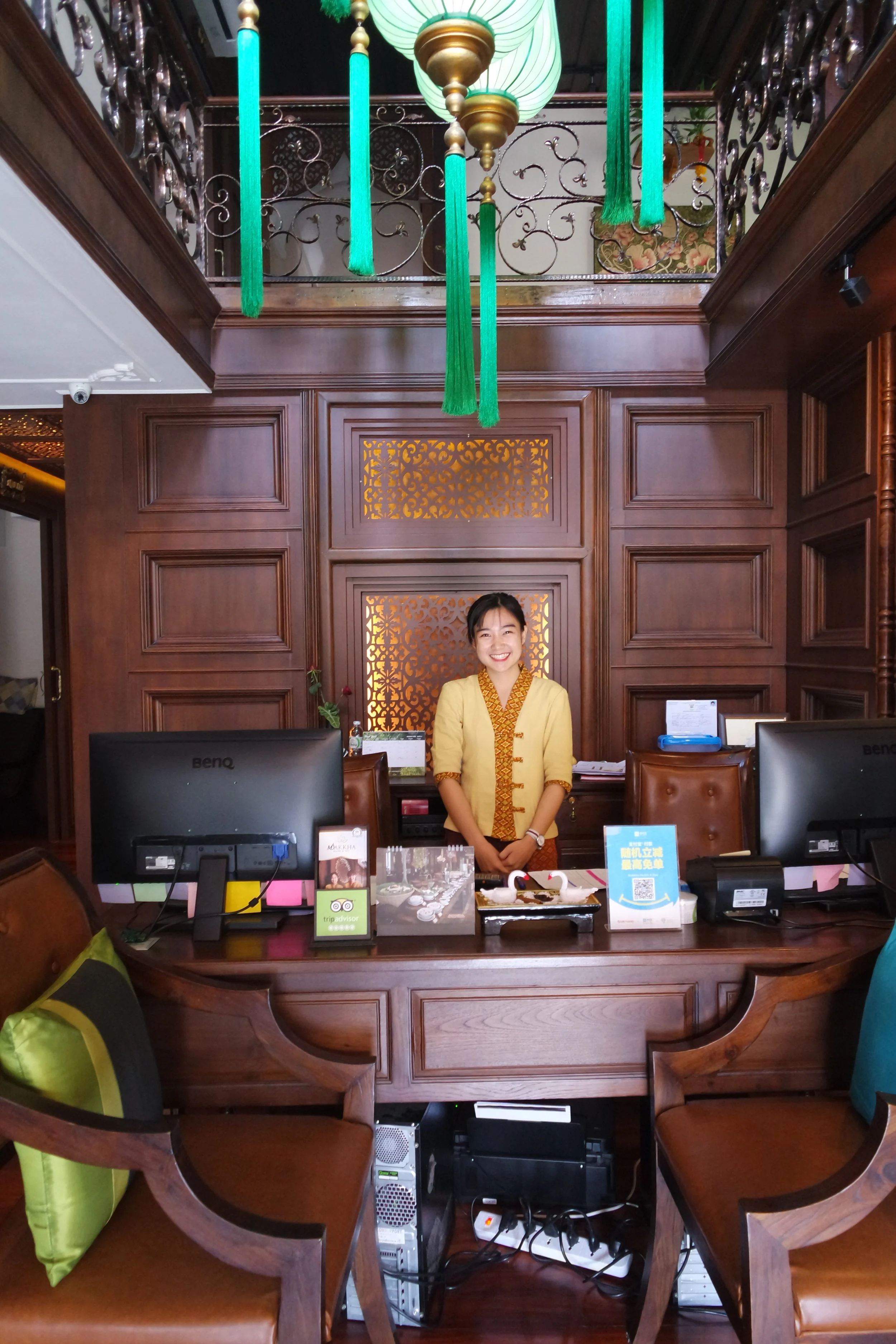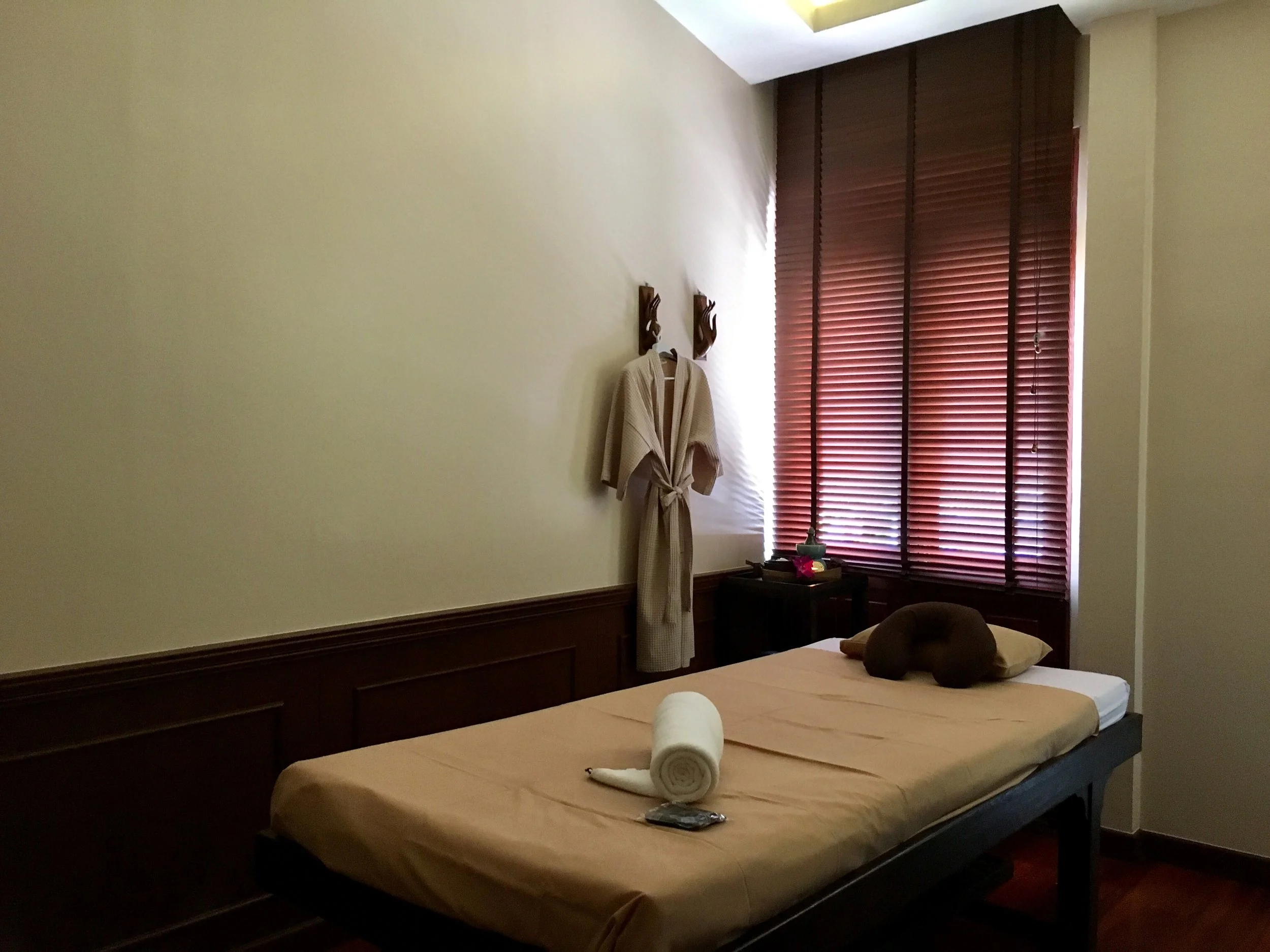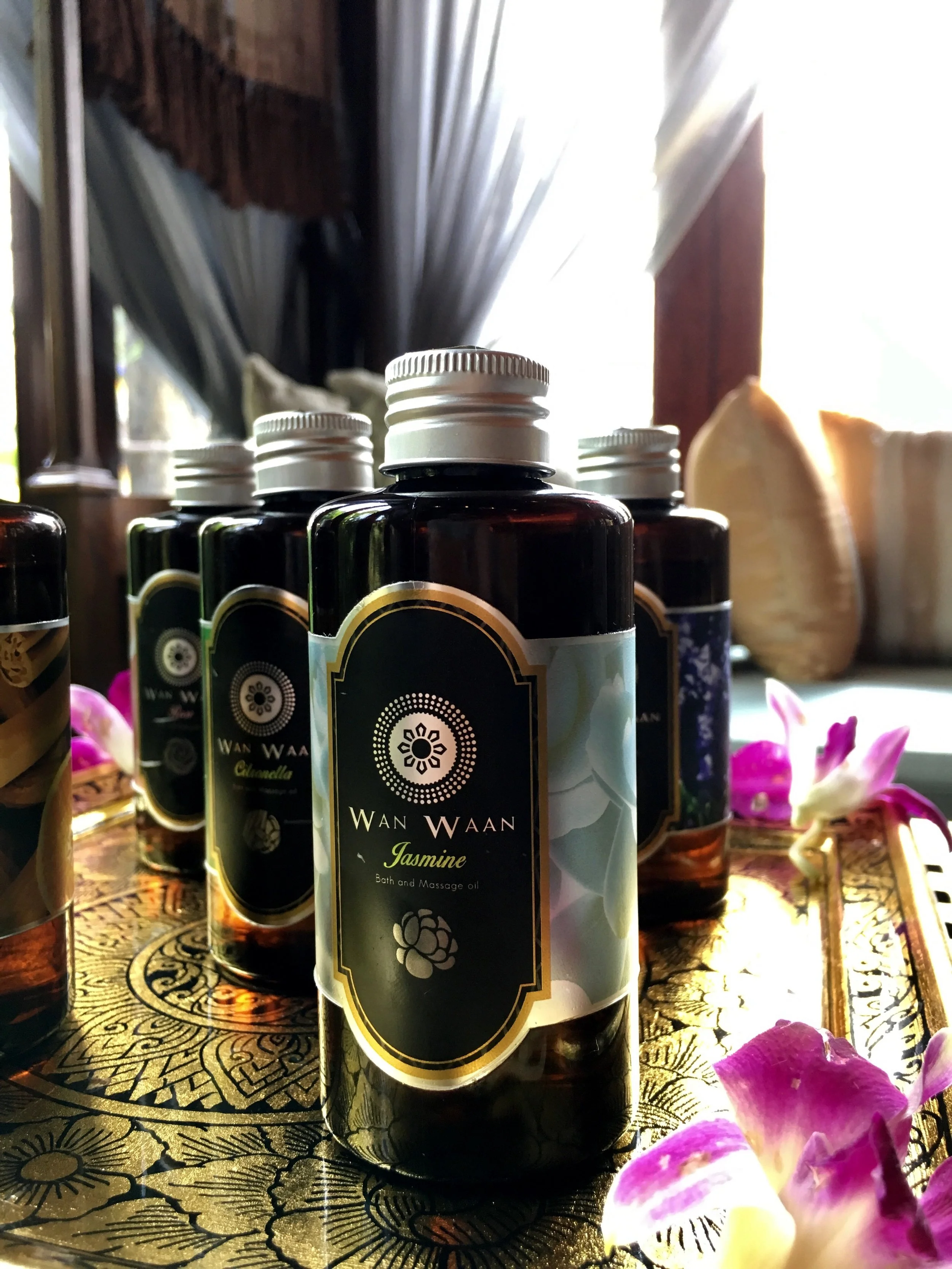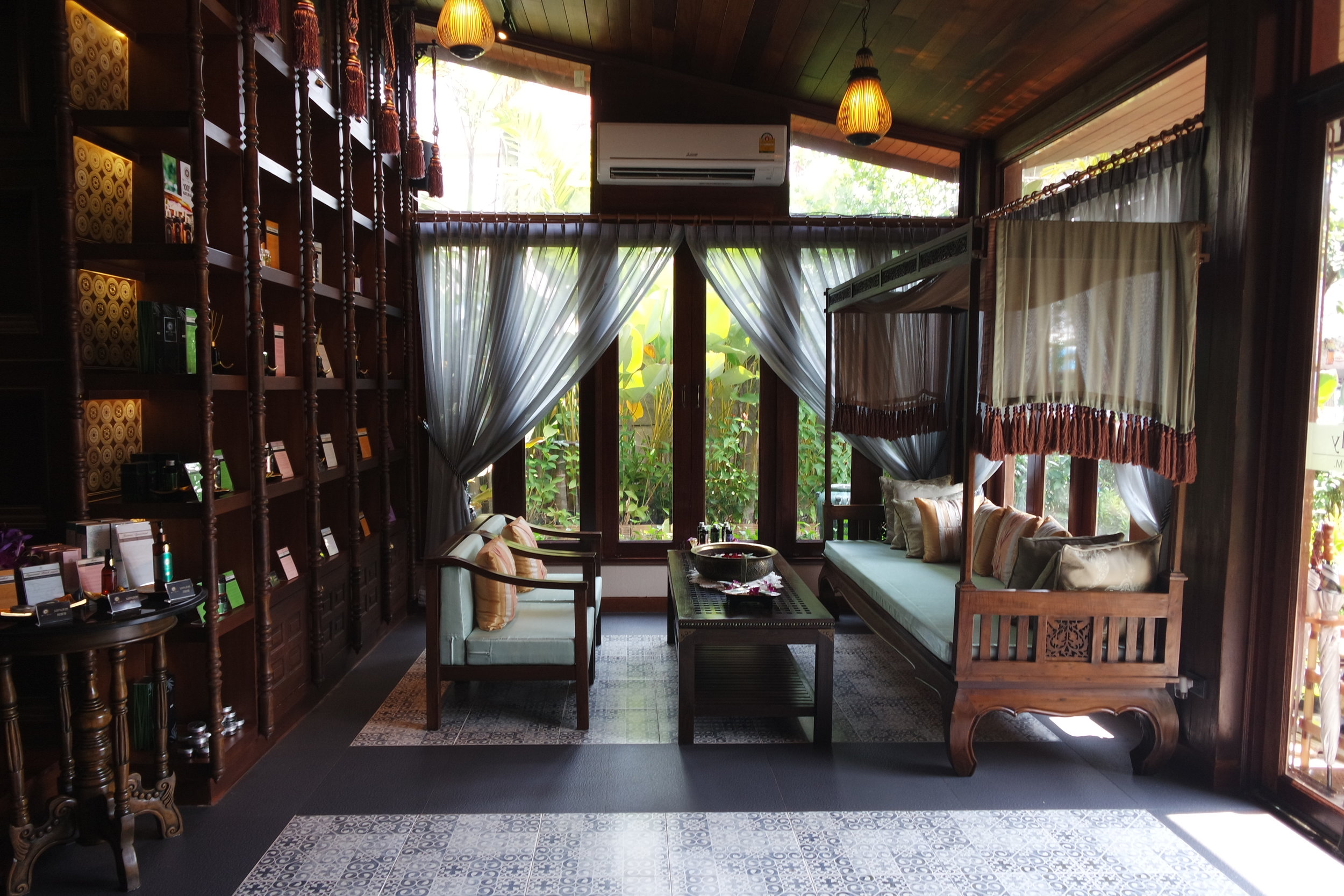Experiencing Ashtanga yoga classes in Kerala taught by David Garrigues.
The Ashtanga yoga studio in the beach town of Kovalam, where Kelly began each day
Our friend Kelly, a delightful, brave young woman, went off to India on a whim to join a yoga retreat run by David Garrigues.
The town of Kovalam charmed Kelly — you can read about its strange walled-in sidewalks and the quirky treehouse-like B&B she stayed in here. –Wally
“We do yoga to understand God and prepare ourselves for enlightenment.”
Our fearless adventurer, who had a major breakthrough in her yoga practice during her two-week stay in India
What brought you to Kovalam?
I went to practice yoga. I had been thinking about going to India for a few years, since I started practicing. I was kinda stuck in a rut with my yoga practice. I hadn’t been progressing, and I decided a good way to get out of it would be to go to India.
Why India?
That’s the birthplace of yoga. That’s where the Ashtanga tradition is from — it originated in Mysore, India. Ashtanga yoga is basically a set number of postures in each of the six series. It’s super traditional. You do it every morning.
I didn’t end up going to Mysore, but I did practice with David Garrigues, a prominent Ashtanga teacher, in the South of India, in Kovalam. He’s based in Philadelphia but has been traveling around a lot.
It was one of those spur-of-the-moment things — though I don’t know if most people do a spur-of-the-moment thing with India. I made the decision very quickly. I booked the trip after thinking about it for about five minutes.
Sometimes you need a helping hand to move past a gatekeeper pose
What was the yoga retreat like?
Every morning, I’d get up at 6 a.m. and do yoga for about two hours. Sometimes there were sutra classes, or we’d go back in the afternoon for an asana [yoga postures] theory class.
What was interesting is I had a lot of challenges with my body over the two weeks I was there. I was in a program that was pretty physically demanding. At the same time, I was getting my body worked on three hours a day at an Ayurvedic clinic. And so the whole time I was there, I was intensely aware of the experience of being in a body. I would feel more frustrated when I couldn’t do a yoga pose. It felt more emotional than it usually does.
But by the second week, I was doing poses that I could never do. That’s a big deal in Ashtanga because in order to move to the next posture in the series, you have to be able to do the one preceding it. People get stuck at what are called gatekeeper poses. I was stuck at Marichyasana D. It’s basically a really deep twist, where you bind behind your knee. I broke through that, with an assist, and I had never come close to doing it before. And I felt like crying — it was really intense emotion.
Some of the more intense asanas, or yoga postures
What appeals to you about yoga?
There are eight limbs of yoga, and asana is just one of them. It’s this all-encompassing spiritual practice to actually do yoga. There are the breathing practices, meditation and other ones. All of it ladders up to this idea that we do yoga in order to understand God and prepare ourselves for enlightenment.
It isn’t associated with any religion — that’s a common misperception. It pairs really well with Buddhism and with Hinduism, and there are definitely shared influences.
Not a bad spot for some evening yoga
How did you feel by the end of your trip?
It was the definitely healthiest I’ve ever felt in my life. I was not ready to come back. I wanted to stay.


